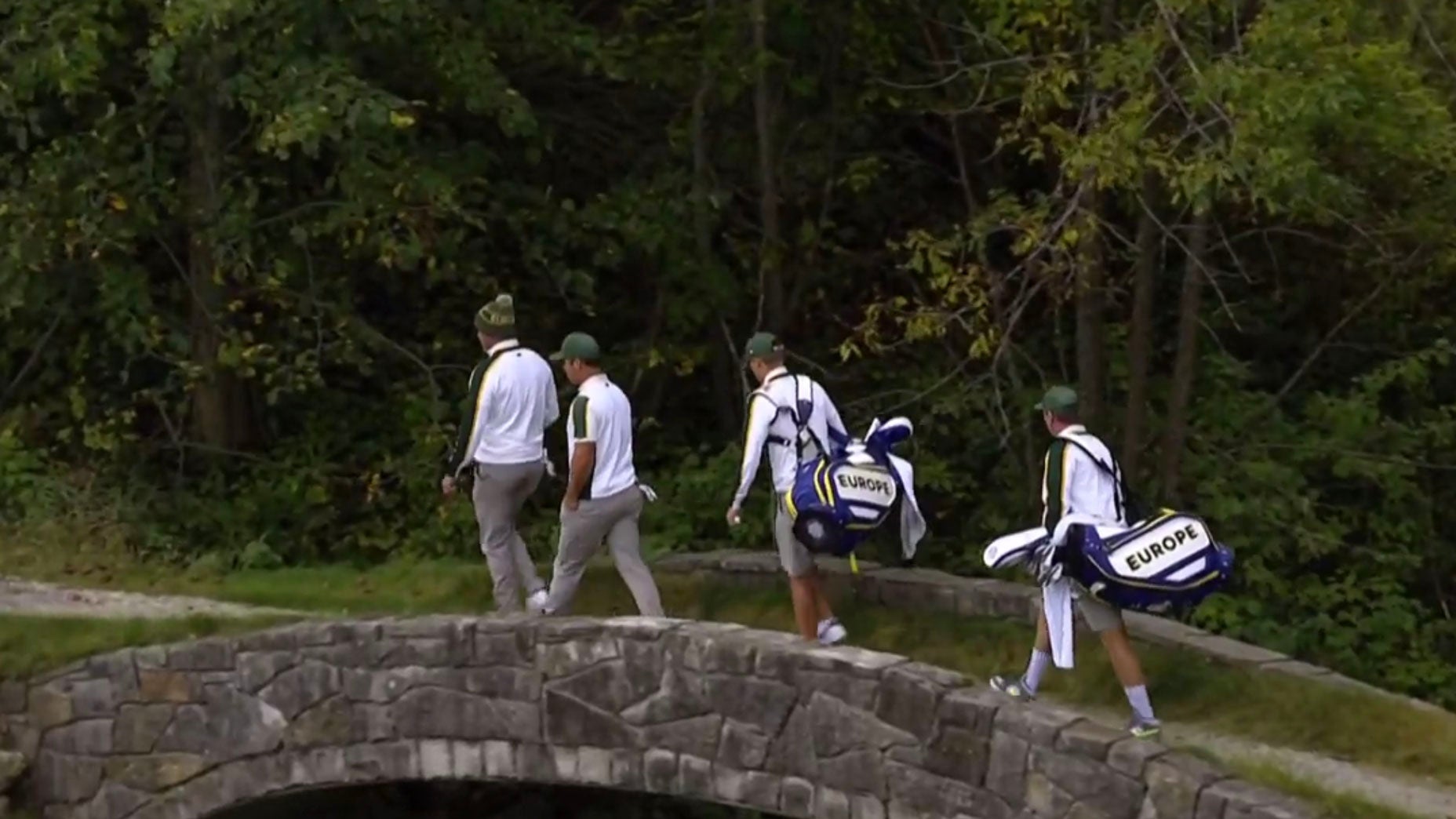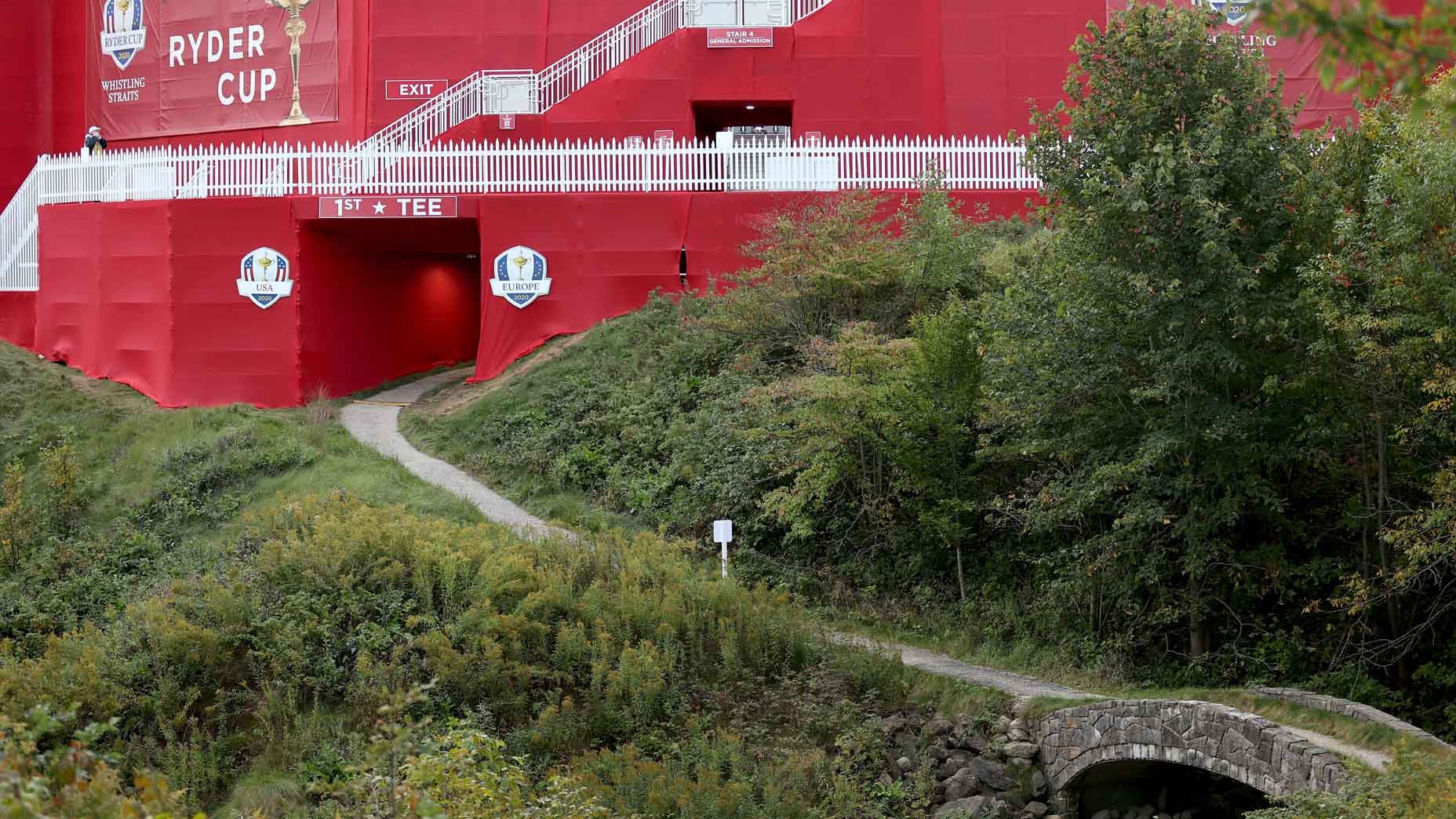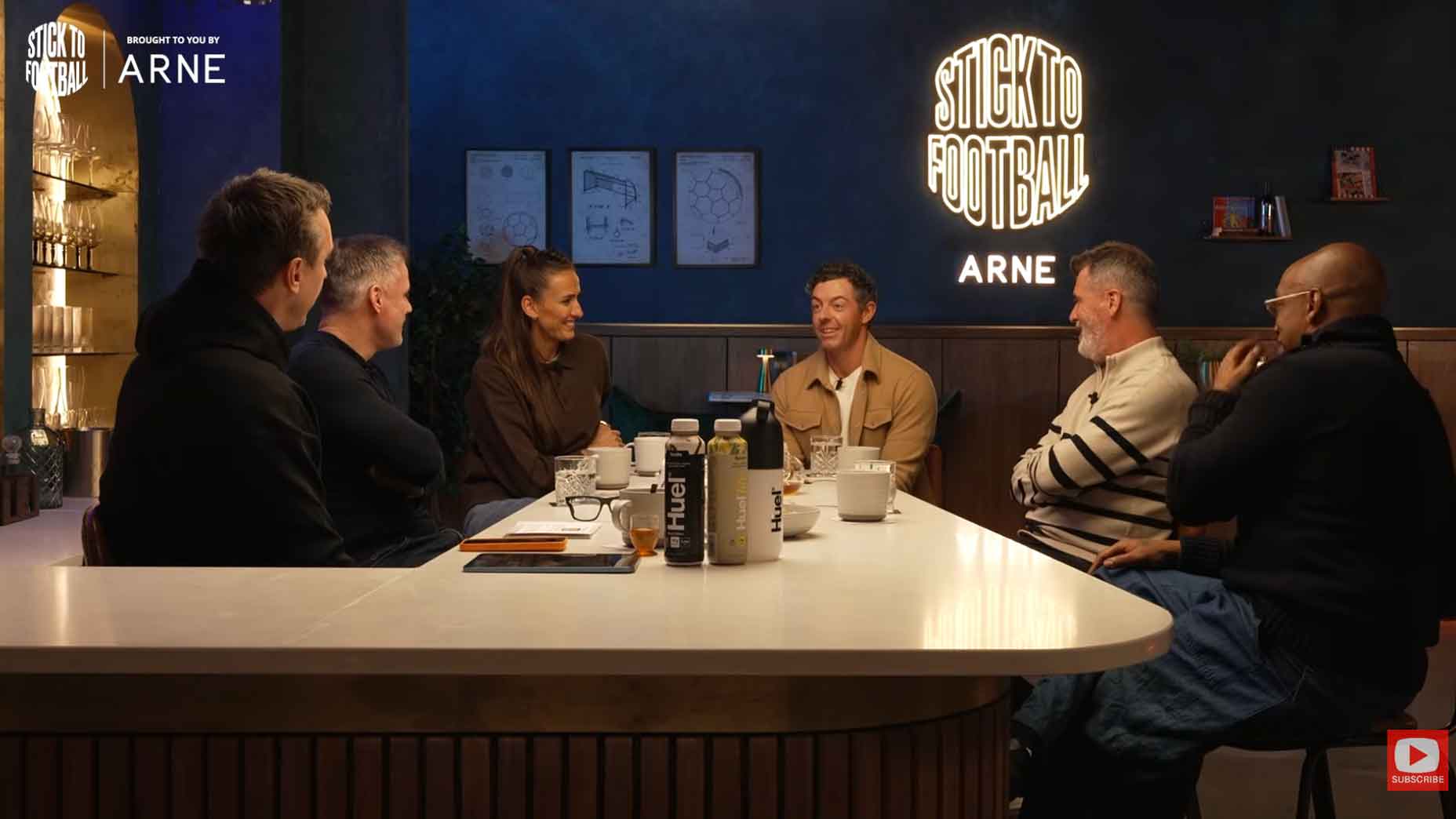HAVEN, Wis. — Justin Thomas remembers it like it was yesterday. That 1st tee at the Ryder Cup in France sure was nerve-racking. But for him the heavy nerves kicked off in the moments before he arrived, simply walking to the tee.
The walk wasn’t long at Le Golf National, but he didn’t know who would hit first, he or teammate Jordan Spieth. He was playing his first Ryder Cup, and working his way up the adjacent bridge with European fans bellowing out on all sides. When the grandstand surrounding the tee turns into this pulsating mess of metal, nerves arrive long before players stick their peg in the ground.
“It’s a bizarre feeling that’s hard to explain,” Thomas said Tuesday. “But I’m pretty excited to experience it again in a couple days.”
This week, the walk to that 1st tee is longer than ever, more secluded than ever, and more gladiatorial than we’ve seen in Ryder Cup history. Over the river and through the woods … the gravel path toward No. 1 is flying up the Nerviest Walk in Golf power rankings.

Tour players love having options. Either for their approach shots into the green, or for traveling to the next tournament on the schedule. It helps them feel in control. But there is one path here. This walk is all you’ve got. It’s about 500 feet as the crow flies from the practice range. Fifty steps on the turf, 20 up the winding staircase, 15 more across the bridge, and 20 down the other side. Rap a couple putts and try not to think at the 100-foot red wall staring down on you and the tens of thousands on the other side of it. Have we mentioned that nine of these players are rookies?
They’ve been thinking about it the entire time. Concert speakers will be blasting music for hours before the first tee shots take flight. And this week’s wind conveniently blowing decibels in the players’ direction. There’s no avoiding the sound of the tee, so don’t be shocked when Beats, Bose and Sony earbuds get free airtime on TV.
What follows the putting green is perhaps the nerviest part of it all. Another 100 steps down the path — single-file now! — over a stone bridge and up to the entryway of the grandstand. Past Ryder Cups have had openings along the sides of the stands, where opposing players could try and sneak into the arena rather unnoticed. This week’s coliseum has players enter from behind and beneath the frothing crowd. There are water coolers, snacks, fruit and a few last trappings of comfort, but players won’t spend much time in the belly of the beast. There’s nothing comfortable about standing under temporary scaffolding that creaks with every “I Believe that We Will Win.”

“You know it’s coming,” Ian Poulter said Wednesday. “It’s been building all week. It’s exciting. You know, it’s a big tee box.”
It is a big tee box. And one that’ll ask players to think a bit harder this year. In France, there was a forced layup that called for a smooth long iron or fairway wood. Depending on the wind and strategy, we’ll see anything from Matt Fitzpatrick’s 210-yard long iron to Bryson DeChambeau’s 330-yard driver swing. What is the wind doing … where is my landing zone … where is my caddie … pump up the crowd … who’s hitting first … pump up the crowd again … did I forget anything? Questions swirl like the wind. Poulter, unsurprisingly, absolutely loves it.
“From the moment you kind of walk out your tunnel, to getting that tee peg and attempting to put the ball on the tee, it’s a pretty fun ride.”










